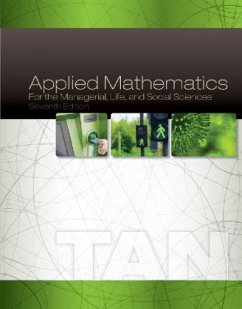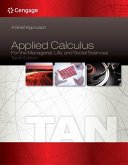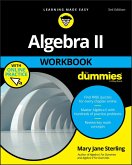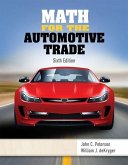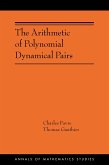Soo Tan (Stonehill College)
Applied Mathematics for the Managerial, Life, and Social Sciences
Soo Tan (Stonehill College)
Applied Mathematics for the Managerial, Life, and Social Sciences
- Gebundenes Buch
- Merkliste
- Auf die Merkliste
- Bewerten Bewerten
- Teilen
- Produkt teilen
- Produkterinnerung
- Produkterinnerung
Using real-world examples to motivate students, this title combines theory with innovative technology, and offers flexibility that caters to both traditional and modern practitioners. It includes insightful Portfolios, which highlight the careers of real people and discuss how they use math in their professions.
Andere Kunden interessierten sich auch für
![Applied Mathematics for the Managerial, Life, and Social Sciences Applied Mathematics for the Managerial, Life, and Social Sciences]() Soo Tan (Stonehill College)Applied Mathematics for the Managerial, Life, and Social Sciences270,99 €
Soo Tan (Stonehill College)Applied Mathematics for the Managerial, Life, and Social Sciences270,99 €![Applied Calculus for the Managerial, Life, and Social Sciences Applied Calculus for the Managerial, Life, and Social Sciences]() Soo Tan (Stonehill College)Applied Calculus for the Managerial, Life, and Social Sciences154,99 €
Soo Tan (Stonehill College)Applied Calculus for the Managerial, Life, and Social Sciences154,99 €![Algebra II Workbook for Dummies Algebra II Workbook for Dummies]() Mary Jane Sterling (Bradley University, Peoria, IL)Algebra II Workbook for Dummies26,99 €
Mary Jane Sterling (Bradley University, Peoria, IL)Algebra II Workbook for Dummies26,99 €![Math for the Automotive Trade Math for the Automotive Trade]() William deKryger (Central Michigan University)Math for the Automotive Trade260,99 €
William deKryger (Central Michigan University)Math for the Automotive Trade260,99 €![Basic Algebra I Basic Algebra I]() Nathan JacobsonBasic Algebra I26,99 €
Nathan JacobsonBasic Algebra I26,99 €![The Arithmetic of Polynomial Dynamical Pairs The Arithmetic of Polynomial Dynamical Pairs]() Charles FavreThe Arithmetic of Polynomial Dynamical Pairs87,99 €
Charles FavreThe Arithmetic of Polynomial Dynamical Pairs87,99 €![College Algebra College Algebra]() James StewartCollege Algebra360,99 €
James StewartCollege Algebra360,99 €-
-
-
Using real-world examples to motivate students, this title combines theory with innovative technology, and offers flexibility that caters to both traditional and modern practitioners. It includes insightful Portfolios, which highlight the careers of real people and discuss how they use math in their professions.
Hinweis: Dieser Artikel kann nur an eine deutsche Lieferadresse ausgeliefert werden.
Hinweis: Dieser Artikel kann nur an eine deutsche Lieferadresse ausgeliefert werden.
Produktdetails
- Produktdetails
- Verlag: Brooks/Cole / Cengage Learning EMEA
- 7. Aufl.
- Seitenzahl: 1024
- Erscheinungstermin: 1. Januar 2015
- Englisch
- Abmessung: 287mm x 226mm x 37mm
- Gewicht: 2064g
- ISBN-13: 9781305107908
- ISBN-10: 130510790X
- Artikelnr.: 41097085
- Herstellerkennzeichnung
- Libri GmbH
- Europaallee 1
- 36244 Bad Hersfeld
- gpsr@libri.de
- Verlag: Brooks/Cole / Cengage Learning EMEA
- 7. Aufl.
- Seitenzahl: 1024
- Erscheinungstermin: 1. Januar 2015
- Englisch
- Abmessung: 287mm x 226mm x 37mm
- Gewicht: 2064g
- ISBN-13: 9781305107908
- ISBN-10: 130510790X
- Artikelnr.: 41097085
- Herstellerkennzeichnung
- Libri GmbH
- Europaallee 1
- 36244 Bad Hersfeld
- gpsr@libri.de
Soo T. Tan has published numerous papers in Optimal Control Theory and Numerical Analysis. He received his S.B. degree from Massachusetts Institute of Technology, his M.S. degree from the University of Wisconsin-Madison, and his Ph.D. from the University of California at Los Angeles. "One of the most important lessons I learned from my early experience teaching these courses is that many of the students come into these courses with some degree of apprehension. This awareness led to the intuitive approach I have adopted in all of my texts."
1. FUNDAMENTALS OF ALGEBRA.1.1 Real Numbers; 1.2 Polynomials; 1.3 Factoring Polynomials; 1.4 Rational Expressions; 1.5 Integral Exponents; 1.6 Solving Equations; 1.7 Rational Exponents and Radicals; 1.8 Quadratic Equations; 1.9 Inequalities and Absolute Value.2. FUNCTIONS AND THEIR GRAPHS.2.1 The Cartesian Coordinate System and Straight Lines; 2.2 Equations of Lines; 2.3 Functions and Their Graphs; 2.4 The Algebra of Functions; 2.5 Linear Functions; 2.6 Quadratic Functions; 2.7 Functions and Mathematical Models; 2.8 The Method of Least Squares (Optional).3. EXPONENTIAL AND LOGARITHMIC FUNCTIONS.3.1 Exponential Functions; 3.2 Logarithmic Functions; 3.3 Exponential Functions as Mathematical Models.4. MATHEMATICS OF FINANCE.4.1 Compound Interest; 4.2 Annuities; 4.3 Amortization and Sinking Funds; 4.4 Arithmetic and Geometric Progressions.5. SYSTEMS OF LINEAR EQUATIONS AND MATRICES.5.1 Systems of Linear Equations: An Introduction; 5.2 Systems of Linear Equations: Unique Solutions; 5.3 Systems of Linear Equations: Underdetermined.and Overdetermined Systems; 5.4 Matrices; 5.5 Multiplication of Matrices; 5.6 The Inverse of a Square Matrix.6. LINEAR PROGRAMMING.6.1 Graphing Systems of Linear Inequalities in Two Variables; 6.2 Linear Programming Problems; 6.3 Graphical Solution of Linear Programming Problems; 6.4 The Simplex Method: Standard Maximization Problems; 6.5 The Simplex Method: Standard Minimization Problems.7. SETS AND PROBABILITY.7.1 Sets and Set Operations; 7.2 The Number of Elements in a Finite Set; 7.3 The Multiplication Principle; 7.4 Permutations and Combinations; 7.5 Experiments, Sample Spaces, and Events; 7.6 Definition of Probability; 7.7 Rules of Probability.8. ADDITIONAL TOPICS IN PROBABILITY.8.1 Use of Counting Techniques in Probability; 8.2 Conditional Probability and Independent Events; 8.3 Bayes' Theorem; 8.4 Distributions of Random Variables; 8.5 Expected Value; 8.6 Variance and Standard Deviation.9. THE DERIVATIVE.9.1 Limits; 9.2 One-Sided Limits and Continuity; 9.3 The Derivative; 9.4 Basic Rules of Differentiation; 9.5 The Product and Quotient Rules; Higher Order Derivatives; 9.6 The Chain Rule; 9.7 Differentiation of Exponential and Logarithmic Functions; 9.8 Marginal Functions in Economics.10. APPLICATIONS OF THE DERIVATIVE.10.1 Applications of the First Derivative; 10.2 Applications of the Second Derivative; 10.3 Curve Sketching; 10.4 Optimization I; 10.5 Optimization II.11. INTEGRATION.11.1 Antiderivatives and the Rules of Integration; 11.2 Integration by Substitution; 11.3 Area and the Definite Integral; 11.4 The Fundamental Theorem of Calculus; 11.5 Evaluating Definite Integrals; 11.6 Area between Two Curves; 11.7 Applications of the Definite Integral to Business and Economics.12. CALCULUS OF SEVERAL VARIABLES.12.1 Functions of Several Variables; 12.2 Partial Derivatives; 12.3 Maxima and Minima of Functions of Several Variables.
1. FUNDAMENTALS OF ALGEBRA.1.1 Real Numbers; 1.2 Polynomials; 1.3 Factoring Polynomials; 1.4 Rational Expressions; 1.5 Integral Exponents; 1.6 Solving Equations; 1.7 Rational Exponents and Radicals; 1.8 Quadratic Equations; 1.9 Inequalities and Absolute Value.2. FUNCTIONS AND THEIR GRAPHS.2.1 The Cartesian Coordinate System and Straight Lines; 2.2 Equations of Lines; 2.3 Functions and Their Graphs; 2.4 The Algebra of Functions; 2.5 Linear Functions; 2.6 Quadratic Functions; 2.7 Functions and Mathematical Models; 2.8 The Method of Least Squares (Optional).3. EXPONENTIAL AND LOGARITHMIC FUNCTIONS.3.1 Exponential Functions; 3.2 Logarithmic Functions; 3.3 Exponential Functions as Mathematical Models.4. MATHEMATICS OF FINANCE.4.1 Compound Interest; 4.2 Annuities; 4.3 Amortization and Sinking Funds; 4.4 Arithmetic and Geometric Progressions.5. SYSTEMS OF LINEAR EQUATIONS AND MATRICES.5.1 Systems of Linear Equations: An Introduction; 5.2 Systems of Linear Equations: Unique Solutions; 5.3 Systems of Linear Equations: Underdetermined.and Overdetermined Systems; 5.4 Matrices; 5.5 Multiplication of Matrices; 5.6 The Inverse of a Square Matrix.6. LINEAR PROGRAMMING.6.1 Graphing Systems of Linear Inequalities in Two Variables; 6.2 Linear Programming Problems; 6.3 Graphical Solution of Linear Programming Problems; 6.4 The Simplex Method: Standard Maximization Problems; 6.5 The Simplex Method: Standard Minimization Problems.7. SETS AND PROBABILITY.7.1 Sets and Set Operations; 7.2 The Number of Elements in a Finite Set; 7.3 The Multiplication Principle; 7.4 Permutations and Combinations; 7.5 Experiments, Sample Spaces, and Events; 7.6 Definition of Probability; 7.7 Rules of Probability.8. ADDITIONAL TOPICS IN PROBABILITY.8.1 Use of Counting Techniques in Probability; 8.2 Conditional Probability and Independent Events; 8.3 Bayes' Theorem; 8.4 Distributions of Random Variables; 8.5 Expected Value; 8.6 Variance and Standard Deviation.9. THE DERIVATIVE.9.1 Limits; 9.2 One-Sided Limits and Continuity; 9.3 The Derivative; 9.4 Basic Rules of Differentiation; 9.5 The Product and Quotient Rules; Higher Order Derivatives; 9.6 The Chain Rule; 9.7 Differentiation of Exponential and Logarithmic Functions; 9.8 Marginal Functions in Economics.10. APPLICATIONS OF THE DERIVATIVE.10.1 Applications of the First Derivative; 10.2 Applications of the Second Derivative; 10.3 Curve Sketching; 10.4 Optimization I; 10.5 Optimization II.11. INTEGRATION.11.1 Antiderivatives and the Rules of Integration; 11.2 Integration by Substitution; 11.3 Area and the Definite Integral; 11.4 The Fundamental Theorem of Calculus; 11.5 Evaluating Definite Integrals; 11.6 Area between Two Curves; 11.7 Applications of the Definite Integral to Business and Economics.12. CALCULUS OF SEVERAL VARIABLES.12.1 Functions of Several Variables; 12.2 Partial Derivatives; 12.3 Maxima and Minima of Functions of Several Variables.

